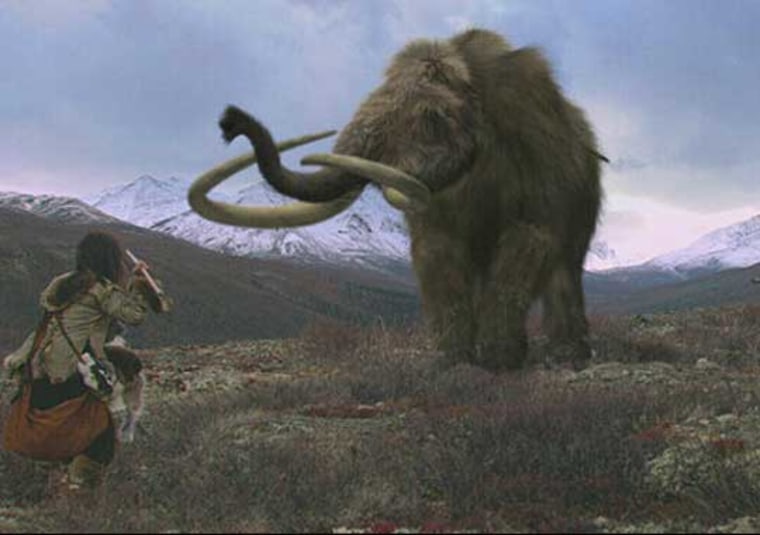Necessity compelled Neanderthals to wear tailored clothing and dry hunks of big game meat, according to a new study on the survival needs of these now-extinct prehistoric humans.
The findings help to explain how Neanderthals survived the often chilly conditions of Northern Europe. The report also shows how these first Europeans were able to transport meat over long distances without having it rot.
The new study, which has been accepted for publication in the Journal of Archaeology, found Neanderthals sported "one or two layers of skins/furs and wrapped skins/furs for shoes, held together by leather strings."
Author Bent Sorensen told Discovery News that chewing clothing materials wasn't beneath these crafty members of the Homo genus.
"Neanderthal tooth marks indicate chewing hides for softening, which is essential for clothes' making," said Sorensen, a researcher in the Department of Environmental, Social and Spatial Change at Roskilde University.
Using the body surface area of Neanderthals, based on their skeletal remains, along with known climate condition averages for Northern Europe at the time, he calculated the metabolic body energy required to compensate for energy losses during sleep, daily settlement activities and hunting expeditions.
Even with warm fires lit in caves and at other home sites, Sorensen believes Neanderthals must have slept underneath mammoth skins and other coverings.
Tools for clothing making, such as hide scrapers and points for poking holes in animal skins, support his contention that Neanderthals dressed in well-fitted layers.
Taking into consideration basic movements needed for hunting and survival, such as walking and wood cutting, Sorensen believes Neanderthal groups would have needed about 1,792 pounds of meat per month, requiring one mammoth — or other big game kill — every seven weeks.
Animal bones and stone tools indicate Neanderthals hunted away from home. In order to transport meat, Sorensen thinks they must have dried it. "I do not know of any evidence for [them] using salt," he explains.
"Carrying dried meat from a mammoth home could now be done by seven to eight round trips [over] 14 to 16 days," he added.
The Neanderthals may have just eaten the plain jerky, which could have been made from horse, red deer, woolly rhinoceros, bison and even mammoth, based on bone finds. They also probably cooked the meat back at home.
"As for preparation, boiling is much more efficient and nutrient-conserving than frying, and evidence from more recent Stone Age settlements confirm that meat was boiled in ceramic pots or skin bags," he said. "However, it is still likely that frying over the camp fire was the usual method in Neanderthal communities, since no containers for boiling have been found."
In a separate study, a team of researchers from the University of Marseille found evidence for at least three Neanderthal sub-groups: one in Western Europe, one in Southern Europe and another one in the Levant. Each likely had their own different cultures, with slightly different clothing, hunting and cooking techniques.
Additional new research by Sorensen determined these sophisticated, rough-and-ready humans probably started to go extinct around 35,000 years ago due to diseases carried by modern humans, with whom they coexisted and may have mated with at the time.
He theorizes that tuberculosis, measles or another deadly disease could have been present in modern humans, who had already developed a certain level of immunity.
"The Neanderthals, like 16th century Amazon Indians, did not have this adaption," Sorensen said.
